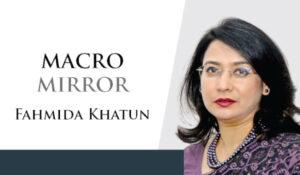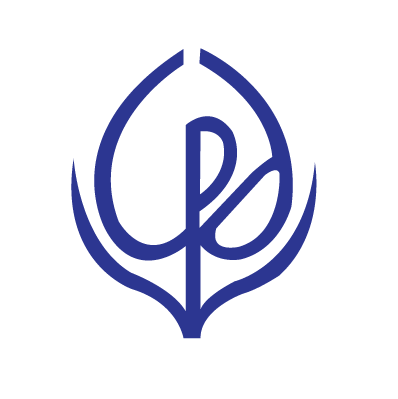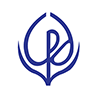Originally posted in The Daily Star on 16 September 2025
 The recent political development in Nepal reflects a broader political pattern emerging across South Asia. After Sri Lanka and Bangladesh experienced similar unrest in 2022 and 2024, respectively, Nepal has now joined the list of countries where public dissatisfaction and anger, particularly among the youth, escalated into mass mobilisation, leading to the removal of governments.
The recent political development in Nepal reflects a broader political pattern emerging across South Asia. After Sri Lanka and Bangladesh experienced similar unrest in 2022 and 2024, respectively, Nepal has now joined the list of countries where public dissatisfaction and anger, particularly among the youth, escalated into mass mobilisation, leading to the removal of governments.
Nepal’s current political upheaval stems from a mix of structural, economic, social, and governance issues. Slow economic progress, high unemployment, and limited opportunities have left many young people feeling frustrated and disillusioned. Furthermore, inflation and rising living costs have worsened their economic and social crises. The youth have also felt excluded from the benefits of national development, which have concentrated among the few. They noted widespread corruption among political elites. The perception that elite capture of public resources has created mistrust in political institutions, leading many Nepalis, including the youth, to believe that political leaders are more focused on their personal and partisan interests than on the country’s welfare.

On the political front, Nepal’s political landscape has been characterised by turmoil, fractured party politics, and frequent government changes for decades. This has increased distrust and concern among the people, especially the younger generation, who called for responsive and transparent governance. Since adopting the 1990 constitution, which introduced a multiparty parliamentary system in Nepal, the country has experimented with various governance forms, shifting from a constitutional monarchy to a federal democratic republic. However, despite these institutional adjustments, stable governance remained elusive. Since 2008, Nepal has seen change in governments 14 times, with none completing its full term. One reason for this is the country’s proportional representation electoral system, which often prevents any single party from securing an outright majority. Coalition governments, although theoretically more inclusive, have proven fragile, prone to internal divisions, and have been unable to implement long-term policy agendas.
This led to the youth-led protests that resulted in the resignation of the former government, marking a significant turning point in Nepalese politics. The protest amplified the voices of young people through social media and enabled swift mobilisation. As in other countries, the internet has fostered collective action on an unprecedented scale. The grievances rapidly turned into nationwide protests.
The unrest in Nepal reflects broader regional trends. In Sri Lanka, large-scale protests against economic mismanagement and corruption led to the resignation of the then president. In Bangladesh, youth-led mass demonstrations challenged political complacency and corruption. Moreover, beyond South Asia, Indonesia has recently experienced violent protests against government corruption and proposed legislation, which is perceived to have threatened democratic principles.
Nepal’s case presents several common threads: a politically aware youth population, significant economic discontent, widespread corruption, and governance failures that neglect the needs of citizens. When governments seem indifferent and unresponsive, young people take to the streets to demand change. The rise of youth-led political activism in South Asia has important implications for countries worldwide.
It challenges the notion that political stability relies solely on institutional inertia or elite control. Today, a highly connected and knowledgeable youth group can put considerable pressure on governments. These events underscore the risk of political instability in developing economies, where high youth unemployment and inequality persist. Governments that ignore the voices of young citizens may face a sudden loss of legitimacy, as witnessed in Nepal and Bangladesh.
The uprisings also highlight the transformative influence of social media and digital mobilisation in shaping political outcomes. Policymakers worldwide must recognise that information flows, online activism, and digital solidarity networks can accelerate political crises or enable swift reform movements. In fact, governments are scared of the power of social media, which is reflected in their attempts to shut down social media during such protests. This has been observed both in Bangladesh and Nepal.
The South Asian experience also underscores a universal need for accountability, transparency, and inclusion. Political legitimacy is increasingly reliant on governments delivering tangible results for citizens, rather than merely holding office. Youth-led protests serve as a benchmark of unmet social and economic expectations. Countries worldwide can take note that proactively engaging younger generations through education, employment, political participation, and governance reforms is crucial to preventing unrest.
It is also worth noting the similarities and differences between Nepal’s and Bangladesh’s recent political upheavals and their aftermath. In Nepal, the interim government’s quick decision to hold elections within six months demonstrates a focus on political legitimacy and stability. In contrast, Bangladesh’s interim government prioritised institutional reforms before elections, leading to a longer electoral process, and took quite a while to announce a specific election timeline. This difference reflects variations in strategic choices. Nepal’s approach indicates an understanding that political uncertainty can be economically and socially destabilising. This was not the case in Bangladesh initially, as the interim government felt that reforms would require a reasonable amount of time, and the country could consider an election only after implementing some crucial reforms.
Interim governments in both Nepal and Bangladesh face the complex challenge of balancing political legitimacy, administrative continuity, and electoral preparation. Nepal’s interim administration has chosen an assertive approach, announcing elections within six months. This strategy aims to restore democratic legitimacy swiftly, even if the resulting government is likely to be short-lived due to the political dynamics. The decision reflects an implicit understanding that legitimacy stems not only from procedural correctness, but also from the timely conduct of elections that enable citizens to choose their representatives directly.
Although Bangladesh has made some improvements in a few economic indicators since the July 2024 upheaval, much more needs to be done to improve the economic conditions of the general public. The delay in elections and incomplete implementation of reforms have held back private and foreign investment. The youth, whose activism played a crucial role in the previous government’s downfall, are yet to be meaningfully engaged in the economy through employment. Bangladesh now faces a paradoxical situation. While governance reforms aim to boost credibility and legitimacy, the delay in elections has created an environment where economic confidence is muted. Investors remain cautious due to the absence of political predictability, a weak law and order situation, and the fact that the youth’s expectations for job creation are largely unmet. This delay risks undermining the momentum of the youth movement that sparked the government change. And prolonged uncertainty can lead to disillusionment and social frustration.
Dr Fahmida Khatun is executive director at the Centre for Policy Dialogue (CPD). Views expressed in this article are the author’s own.



